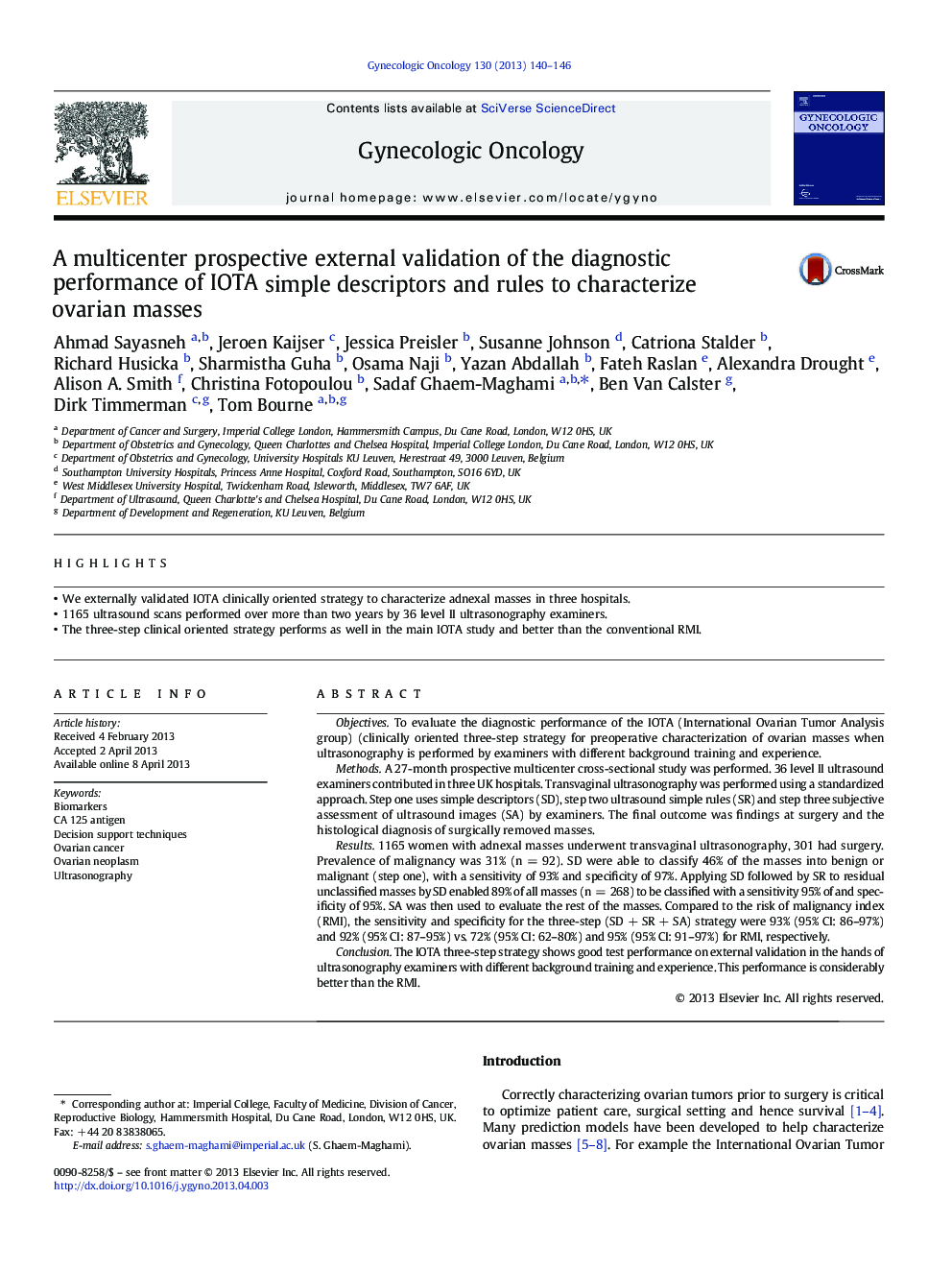| Article ID | Journal | Published Year | Pages | File Type |
|---|---|---|---|---|
| 6185526 | Gynecologic Oncology | 2013 | 7 Pages |
â¢We externally validated IOTA clinically oriented strategy to characterize adnexal masses in three hospitals.â¢1165 ultrasound scans performed over more than two years by 36 level II ultrasonography examiners.â¢The three-step clinical oriented strategy performs as well in the main IOTA study and better than the conventional RMI.
ObjectivesTo evaluate the diagnostic performance of the IOTA (International Ovarian Tumor Analysis group) (clinically oriented three-step strategy for preoperative characterization of ovarian masses when ultrasonography is performed by examiners with different background training and experience.MethodsA 27-month prospective multicenter cross-sectional study was performed. 36 level II ultrasound examiners contributed in three UK hospitals. Transvaginal ultrasonography was performed using a standardized approach. Step one uses simple descriptors (SD), step two ultrasound simple rules (SR) and step three subjective assessment of ultrasound images (SA) by examiners. The final outcome was findings at surgery and the histological diagnosis of surgically removed masses.Results1165 women with adnexal masses underwent transvaginal ultrasonography, 301 had surgery. Prevalence of malignancy was 31% (n = 92). SD were able to classify 46% of the masses into benign or malignant (step one), with a sensitivity of 93% and specificity of 97%. Applying SD followed by SR to residual unclassified masses by SD enabled 89% of all masses (n = 268) to be classified with a sensitivity 95% of and specificity of 95%. SA was then used to evaluate the rest of the masses. Compared to the risk of malignancy index (RMI), the sensitivity and specificity for the three-step (SD + SR + SA) strategy were 93% (95% CI: 86-97%) and 92% (95% CI: 87-95%) vs. 72% (95% CI: 62-80%) and 95% (95% CI: 91-97%) for RMI, respectively.ConclusionThe IOTA three-step strategy shows good test performance on external validation in the hands of ultrasonography examiners with different background training and experience. This performance is considerably better than the RMI.
